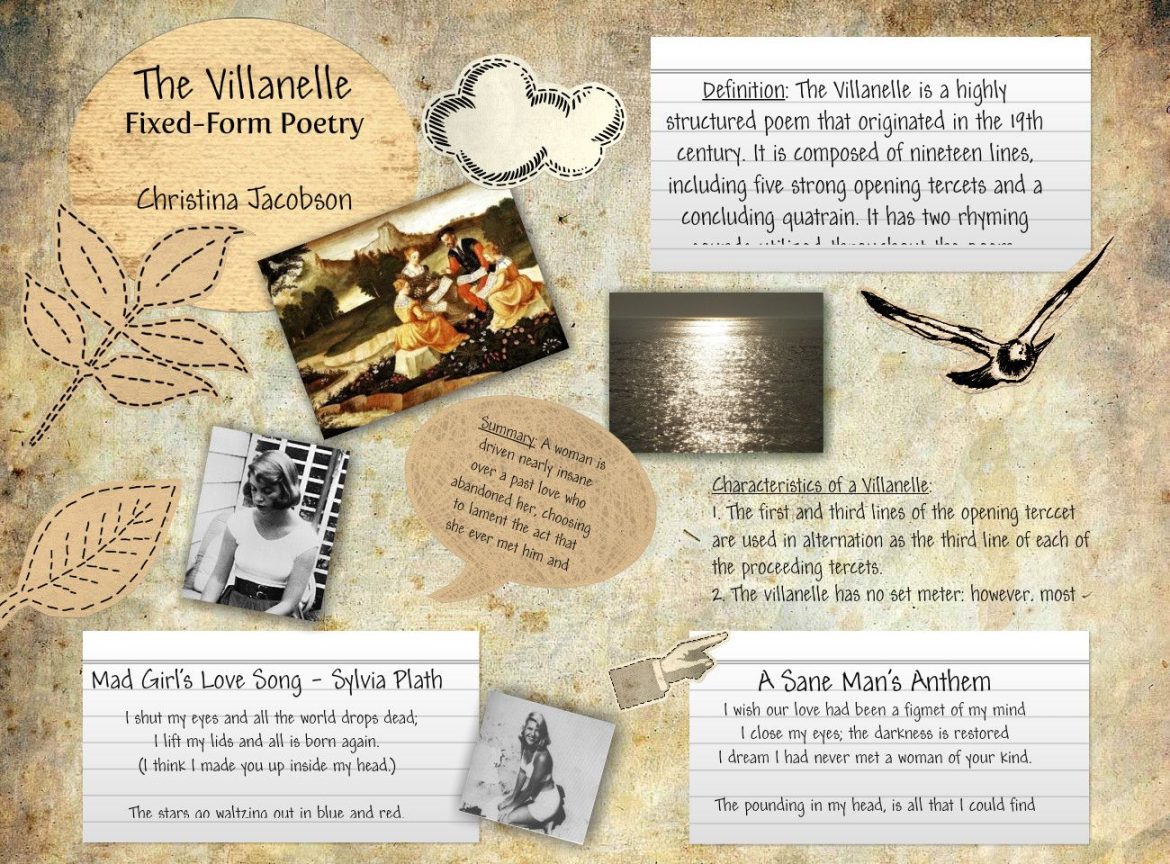The villanelle is a form of poetry that has captivated readers and writers for centuries. Its intricate structure, rhythmic repetition, and ability to convey complex emotions have made it a beloved and enduring poetic form. In this article, we will delve into the reasons why the villanelle continues to hold such a powerful allure for poets and audiences alike.
A Brief History of the Villanelle
Before delving into its appeal, it’s essential to understand the origins and development of the villanelle as a poetic form. The villanelle traces its roots back to medieval France and Italy, where it emerged as a simple rustic song. Over time, it evolved into a more structured poetic form characterized by its strict rhyme scheme and repetitive lines.
One of the most famous early examples of the villanelle is “Villanelle of the Tower” by Jean Passerat, a French poet who lived in the 16th century. However, it wasn’t until the 19th and 20th centuries that the villanelle gained widespread popularity, thanks in part to poets like Dylan Thomas, W. H. Auden, and Sylvia Plath, who all contributed notable villanelles to the literary canon.
The Intriguing Structure of the Villanelle
What sets the villanelle apart from other poetic forms is its unique structure. A traditional villanelle consists of 19 lines divided into five tercets (three-line stanzas) followed by a quatrain (four-line stanza). The rhyme scheme is also highly specific, with lines 1, 6, 12, and 18 all rhyming with each other, and lines 3, 9, 15, and 19 also sharing a rhyme. Additionally, the first and third lines of the poem are repeated alternately at the end of each tercet and then both appear together at the end of the quatrain.
This repetitive structure may seem confining at first glance, but it actually serves to enhance the poem’s thematic depth and emotional impact. The repetition of key lines creates a sense of rhythm and continuity, allowing the poet to explore complex ideas and emotions in a cohesive and compelling manner.
Expressing Complex Emotions Through Repetition
One of the primary reasons why the villanelle is so beloved is its ability to express a wide range of emotions through its repetitive structure. By repeating certain lines throughout the poem, the poet can imbue those lines with layers of meaning and significance, creating a rich tapestry of emotions for the reader to experience.
For example, in Dylan Thomas’s famous villanelle “Do Not Go Gentle into That Good Night,” the repeated line “Rage, rage against the dying of the light” takes on different shades of meaning each time it appears. Initially, it conveys defiance and rebellion, urging the reader to resist death’s inevitability. However, as the poem progresses, the repeated line also becomes a plea for passion and vitality in the face of mortality, adding depth and complexity to the poem’s thematic exploration.
Capturing the Essence of Time and Memory
Another aspect of the villanelle’s appeal is its ability to capture the essence of time and memory. The repetitive nature of the form mirrors the cyclical nature of life, with themes and images recurring throughout the poem like echoes of the past. This lends the villanelle a sense of timelessness and universality, allowing readers to connect with its themes on a deeply personal level.
In Sylvia Plath’s haunting villanelle “Mad Girl’s Love Song,” the repeated lines “I shut my eyes and all the world drops dead” and “I thought I could not live without him” create a sense of nostalgia and longing for lost love. The cyclical repetition of these lines reflects the protagonist’s obsession with the past and her struggle to move on, capturing the bittersweet essence of memory and yearning.
The Challenge and Satisfaction of Form
Beyond its thematic depth and emotional resonance, the villanelle also offers poets a unique challenge and a sense of satisfaction in mastering its form. The strict rhyme scheme and repetitive structure require careful attention to detail and a keen sense of rhythm. Crafting a successful villanelle involves not only choosing the right words and images but also weaving them together in a way that enhances the poem’s overall impact.
For poets, the process of writing a villanelle can be both daunting and rewarding. The constraints of the form force them to think creatively and make deliberate choices about structure and language. When executed effectively, a villanelle can be a testament to the poet’s skill and artistry, showcasing their ability to harness the power of form to convey profound thoughts and emotions.
The Enduring Legacy of Villanelles in Literature
Despite the challenges posed by its structure, the villanelle continues to be a popular and enduring form in contemporary poetry. Poets from diverse backgrounds and traditions have embraced the villanelle, using it as a vehicle to explore a wide range of themes and ideas. Its adaptability and flexibility make it a versatile form that can accommodate both traditional and experimental approaches to poetry.
In recent years, poets like Elizabeth Bishop, Seamus Heaney, and Anne Sexton have all contributed memorable villanelles to the literary landscape, further cementing the form’s enduring legacy. Modern poets continue to find inspiration in the villanelle’s rhythmic repetition and thematic depth, ensuring that this timeless poetic form will continue to captivate audiences for generations to come.
Conclusion
In conclusion, the villanelle’s enduring appeal lies in its unique structure, emotional depth, and timeless themes. Through its repetitive form, the villanelle captures the essence of time, memory, and human experience, inviting readers to delve into its rich tapestry of emotions and ideas. Whether exploring themes of love, loss, or existential angst, the villanelle remains a powerful and evocative form of poetry that continues to inspire poets and readers alike.

